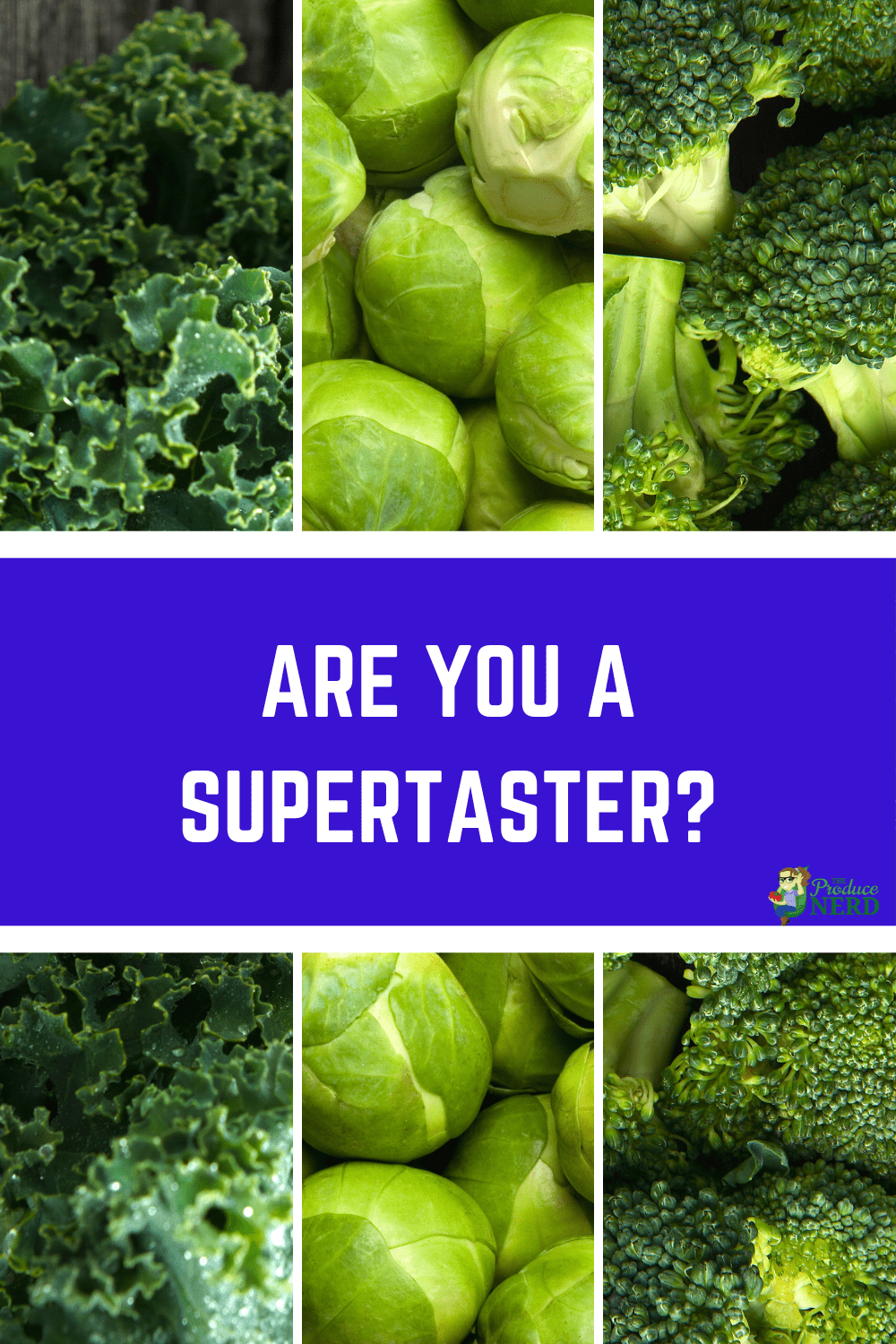Are you highly susceptible to bitter taste, or have a friend or a child that makes a funny face when they try a new vegetable? These are all signs that you might have a supertaster on your hands.
Table of Contents
What Is A Supertaster?
The simple definition is someone that is extremely sensitive to bitter taste.
The more scientific definition is that being a taster is defined by the ability to detect bitterness in PTC (phenylthiocarbamide) and its counterpart PROP (6-n-propylthiouracil). Those who can detect the bitterness are classified as “tasters,” while those who cannot are referred to as “nontasters.” As the “tasters” perceive the bitterness of PTC and PROP differently, the group of “tasters” is split into medium tasters (for whom PROP is moderately bitter) and supertasters (for whom PROP is extremely bitter).
Supertasters have more fungiform papillae, which are taste buds located on the anterior portion of the tongue where taste variation and oral burn occurs. Oral burn is the uncomfortable sensation supertasters experience when tasting irritants, such as capsaicin (chili peppers), piperine (black pepper), ethanol and alcohol.
You Might be More Likely to be a Supertaster if…
Other factors affecting whether someone is a supertaster include sex (woman are more commonly “tasters”) and race (Africans and Asians are more commonly “tasters” compared to Caucasians). Research has approximated that the adult population is made up of approximately 25% nontasters, 50% moderate tasters and 25% supertasters.
Being a supertaster can be a burden, as they are pickier eaters, experience more intense oral sensations and burn, dislike alcoholic beverages, etc. Interestingly, supertasters are also more sensitive to highly sweet and fatty foods. Statistically, supertasters have lower BMI measures than nontasters.
How do Supertasters React to Fruits and Vegetables?
Fruits and vegetables that are bitter include grapefruit, eggplant, asparagus, spinach, cooked cabbage, raw/cooked broccoli, cauliflower, brussels sprouts, kale, etc. For supertasters, these fruits and vegetables taste more bitter than they do for nontasters or moderate tasters.
Ways to prevent this bitterness (and, therefore, dislike) include:
- Adding salt or condiments containing salt to the vegetables. Research has shown that adding salt to vegetables decreases the bitterness more for supertasters than for nontasters.
- Sugar can be used to decrease the perception of bitterness. Helpful tip: when introducing a new vegetable to children, include a sweetener (e.g., salted butter, sugar, sweetened cream) so that they will associate something that they know with the bitter vegetables prior to deciding that they do not like the vegetable based on the bitterness.
With children, you have to be careful not to automatically categorize them as supertasters if they are picky with their food, because that might just be them being picky with their food! If the tips above do not work with kids to get them to eat the specific vegetables, I suggest you reference my post on how to get kids excited about produce for more tips and tricks!
How To Test If You Are A Supertaster?
Extra taste buds found on supertasters can be identified using the following methods:
- Apply blue stain to the anterior portion of the tongue, take pictures and count the fungiform papillae in the specific area where they occur affecting taste.
- Administer aqueous solutions of PTC or PROP at different concentrations. The participants will taste solutions of different concentrations separated by a sip of water.
If you liked this post, you might also enjoy:
- Enjoying New Flavors: The Five Tastes, Texture & Aroma
- Sensory Evaluations: Consumer Panel vs. Trained Panel
- Which is Better: Fresh or Frozen Produce?
Resources:
Duffy, V.B. and Bartoshuk, L.M. “Food Acceptance and Genetic Variation in Taste.” Journal of the American Dietetic Association 100.6 (2000): 647-655. Web. 7 Jul 2016.

